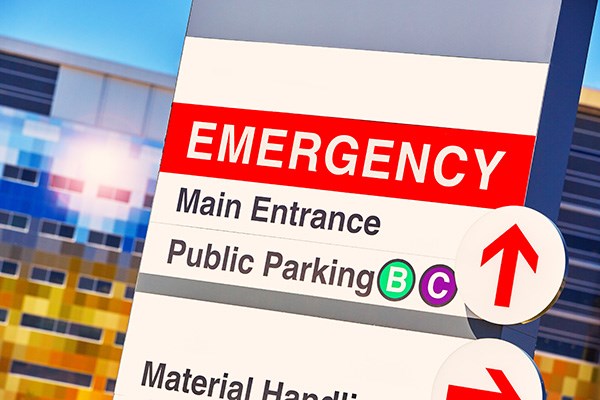Role of the emergency department in our health care system is important and increasing
How much does the emergency department contribute to health care delivery in the United States? Do our policies reflect the ED’s current role?
This study assessed the contribution of emergency department to the health care received in the United States compared to that of outpatient and inpatient services from 1996 to 2010. Using data from two nationally representative samples, the authors found that emergency departments accounted for 47.7% of nonfederal hospital-associated medical care, with that percentage steadily increasing over the study period.
Populations found to account for the increase in ED utilization included: Blacks, Medicare and Medicaid recipients, women, and residents of the South and the West. This finding points to the emergency department’s unique role in providing care to the most socioeconomically vulnerable of Americans and filling the gap in access to care. In a time of turbulent health care reform when accessibility and affordability are often in flux, emergency care continues to have an essential role in our country’s health care system.
Despite its important role, current models of health care delivery - including patient-centered medical homes and accountable care organizations - often fail to consider the full extent of the emergency department’s contribution. The authors discuss the ED’s controversial role in treatment of nonemergency cases. Nonemergent care utilization is often cost-ineffective and a poor use of resources. However, given that many populations who seek the emergency department for nonemergent conditions do so because of limited options for other care, denying these patients treatment would be uncompassionate. The ED must play a role in improving how vulnerable populations receive care, yet this approach should be better integrated with outpatient systems and resources.
Since Medicaid expansion under the Affordable Care Act, evidence suggests that the utilization of the emergency department has increased. Assuming these trends continue, future health care reform must remain cognizant of the emergency department’s large contribution to the overall system. Current efforts to discourage the use of the emergency department for nonemergent care through coverage denial is a dangerous exercise that only exacerbates barriers to access care. Policies should not seek to curb emergency department usage, but instead to include it as a coordinated component of healthcare delivery models.
PMID: 29039720
ARTICLE: Marcozzi D, Carr B, Liferidge A, Baehr N, Browne B. Trends in the Contribution of Emergency Departments to the Provision of Hospital-Associated Health Care in the USA. Int J Health Serv. 2018;48(2):267-288.
Abstract
Traditional approaches to assessing the health of populations focus on the use of primary care and the delivery of care through patient-centered homes, managed care resources, and accountable care organizations. The use of emergency departments (EDs) has largely not been given consideration in these models. Our study aimed to determine the contribution of EDs to the health care received by Americans between 1996 and 2010 and to compare it with the contribution of outpatient and inpatient services using National Hospital Ambulatory Medical Care Survey and National Hospital Discharge Survey databases. We found that EDs contributed an average of 47.7% of the hospital-associated medical care delivered in the United States, and this percentage increased steadily over the 14-year study period. EDs are a major source of medical care in the United States, especially for vulnerable populations, and this contribution increased throughout the study period. Including emergency care within health reform and population health efforts would prove valuable to supporting the health of the nation.
EMRA + PolicyRx Health Policy Journal Club: A collaboration between Policy Prescriptions and EMRA
 As emergency physicians, we care for all members of society, and as such have a unique vantage point on the state of health care. What we find frustrating in our EDs - such as inadequate social services, the dearth of primary care providers, and the lack of mental health services - are universal problems.
As emergency physicians, we care for all members of society, and as such have a unique vantage point on the state of health care. What we find frustrating in our EDs - such as inadequate social services, the dearth of primary care providers, and the lack of mental health services - are universal problems.
As EM residents and fellows, we learn the management of myocardial infarctions and traumas, and how to intubate, but we are not taught how health policy affects all aspects of our experience in the ED. Furthermore, given our unique position in the health care system, we have an incredible opportunity to advocate for our patients, for society, and for physicians. Yet, with so many competing interests vying for our conference education time, advocacy is often not included in the curricula.
This is the gap this initiative aims to fill. Each month, you will see a review of a new health policy article and how it is applicable to emergency physicians.



